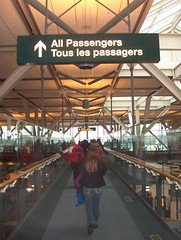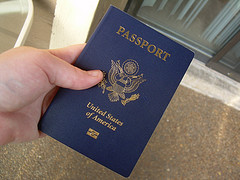 Australian visitors to the United States who are visiting for business, tourism, or health care reasons and staying less than 90 days, do not need a visa. The Visa Waiver Program waives the need for Australian visitors to enter the US as long as certain conditions are met. Under the visa waiver program, time spent in Canada, Mexico, and adjacent islands counts toward the 90-day maximum.
Australian visitors to the United States who are visiting for business, tourism, or health care reasons and staying less than 90 days, do not need a visa. The Visa Waiver Program waives the need for Australian visitors to enter the US as long as certain conditions are met. Under the visa waiver program, time spent in Canada, Mexico, and adjacent islands counts toward the 90-day maximum.
How can an Australian citizen enter the US?
All citizens covered by the visa waiver program, including Australians, are mandated to get travel authorization prior to traveling to the United States. Authorization may be obtained through the online portal, Electronic System for Travel Authorizations (ESTA).
You will receive authorization within a few minutes, but it is advised to apply at least 72 hours in advance of your travel. The authorization is a free Internet application provided by the United States Department of Homeland Security. There are unauthorized third-party websites that have been established and are charging applicants for submitting ESTA applications. These websites are not authorized by the United States government and are scams.
Requirements for Australian Visitors to the US
- Citizens who are traveling for business or pleasure only. The VWP does not apply to federal government business or to members of the media.
- Citizens will be visiting for a period of 90 day or less, this includes time spent in a Canada, Mexico or adjacent islands.
- Must be in possession of an unexpired machine-readable passport (MRP).
- They have complied with previous admission under the Visa Waiver Program and are not ineligible for a US visa.
- They are arriving by a signatory commercial carrier, if traveling by air or sea, and have a return ticket to a foreign destination other than the United States and adjacent islands (like Hawaii).
- They can demonstrate intent to stay only 90 days and have the financial means to support themselves while in the United States.
- They do not have a criminal record.
Upon entering the United States, be prepared to show your VWP paperwork, current passport and to be fingerprinted. When exiting the United States, you will have an exit confirmation added to your travel records to show compliance with the terms of admission. Once in the US, an Australian visitor cannot extend the time on the Visa Waiver Program.
How many times can Australian citizens enter the US?
There is no limit to how many times an Australian citizen can enter the United States under the Visa Waiver Program, however, entry and re-entry into the US is at the discretion of the immigration officials.
Will you need travel insurance as an Australian in the US?
Definitely. It is always necessary to purchase travel insurance when traveling outside your home country. The minimal money spent on a travel insurance policy will be worth it should an unforeseen accident occur and you need medical attention. Medical care in the US is the most expensive in the world. Travel insurance can also help if something comes up and you can’t travel as planned. With cancel for any reason coverage, you won’t lose the money you invested in your trip.





 All United States citizens, including foreign nationals, traveling by air, land, or sea to Canada must present a passport book, passport card, or other Western Hemisphere Travel Initiative compliant document in order to enter the country or to re-enter the US. This means that one or more of these documents are required by one mode of travel or a combination of travel modes. This became effective June 1, 2009, and applies to those travelers over the age of 16. Children under age 16 may continue to use their U.S. birth or naturalization certificate indicating U.S. citizenship in order to enter Canada through a land or sea border.
All United States citizens, including foreign nationals, traveling by air, land, or sea to Canada must present a passport book, passport card, or other Western Hemisphere Travel Initiative compliant document in order to enter the country or to re-enter the US. This means that one or more of these documents are required by one mode of travel or a combination of travel modes. This became effective June 1, 2009, and applies to those travelers over the age of 16. Children under age 16 may continue to use their U.S. birth or naturalization certificate indicating U.S. citizenship in order to enter Canada through a land or sea border.